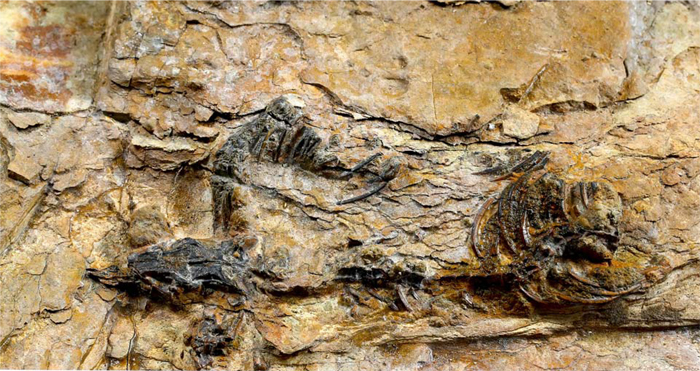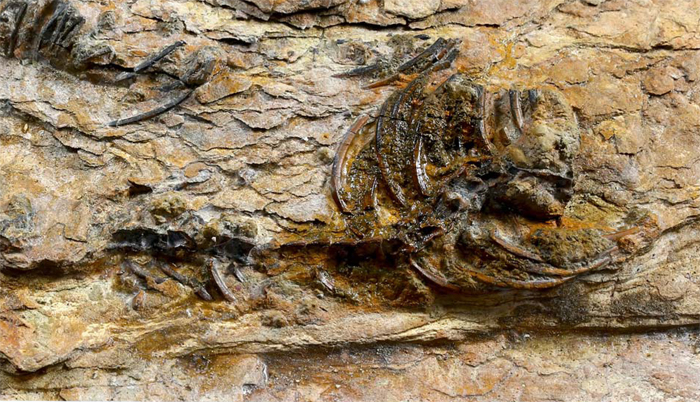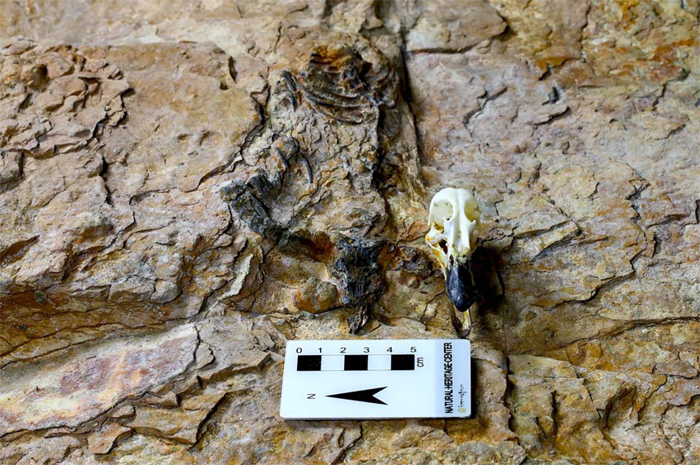The fossils of a small carnivorous dinosaur have been discovered in Hadong County, Gyeongsangnam-do (South Gyeongsang Province). The fossils were found with a complete skeleton, including a skull. This is the first time that a complete fossil set of a flesh-eating dinosaur has been excavated in Korea.
The National Research Institute of Cultural Heritage, part of the Cultural Heritage Administration (CHA), announced on November 24 that its paleontologists unearthed the fossils of a flesh-eating dinosaur with sharp teeth and claws and that they are in very good condition.

The fossilized remains of a carnivorous dinosaur, including a complete skeleton, are discovered in Korea for the first time.
The dinosaur is presumed to have been less than 50 centimeters in total length when it was alive. Its skull is 5.7 centimeters long and 2.6 centimeters wide. The whole skeleton is 28 centimeters long. When it was unearthed, its vertebrae and ribs were still connected. Adjacent to it, researchers found what are believed to be the fossils of another dinosaur and the findings could lead to two sets of dinosaur bones.

The fossils were found in the Hasandong stratum from the early Cretaceous Period (145-66 million years ago) of the Mesozoic Era (252-66 million years ago). This stratum is believed to have been formed between 110 and 120 million years ago. In the past, the same stratum has delivered up the bones of a herbivorous dinosaur, the Pukyongosaurus, and of a pterosaur, a dinosaur with wings.
Researchers found teeth, leg bones and ribs of carnivorous dinosaurs in the strata in the past, but this is the first time that they came across the remains of a flesh-eating dinosaur with a complete skeleton, including a skull and a lower jaw.

The fossils of a carnivorous dinosaur (left) are compared to a modern duck skull.
The National Research Institute of Cultural Heritage quickly excavated the fossils and stabilized and reinforced the surrounding bedrock.

“It is difficult for a small dinosaur to become fossilized and such fossils are very rare across the world,” said a researcher at the National Research Institute of Cultural Heritage. “We need to conduct further research into whether the fossil is related to the Minisauripus, whose footprints were discovered in the southern areas of Gyeongsangnam-do.”